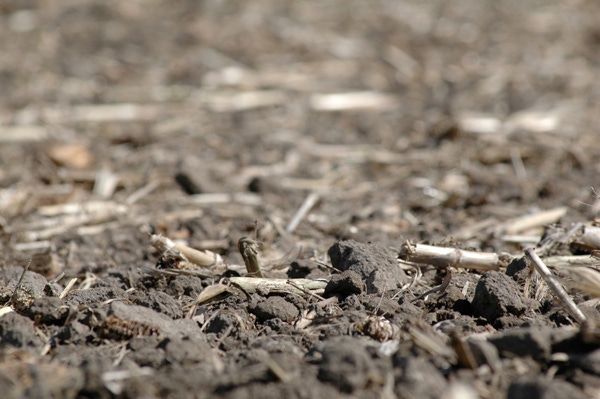December 15, 2016

Editor’s Note: This company media release is unedited, for your information.
Is low pH limiting nutrient availability in your soil? A soil pH between 6.5 and 7.0 is ideal for agronomic crops, but a soil pH greater or less than this affects nutrient availability and may lead to toxicity.
“Understanding what causes soil acidity and how to correct it is essential to nutrient management,” said Steve Frack, Vice President of Laboratory Operations for AgSource Laboratories.
First, a quick reminder of the pH scale: pH ranges from 0 to 14. A pH of 0 is extremely acidic and a pH of 14 is extremely alkaline. A soil with a pH of 7 is neutral. In some situations, soil pH can be as low as 3.0 and as high as 9.5, which is severely yield-limiting for most crops. Soil pH normally ranges between 5.0 and 8.5. See Table 1 for a list of pH ranges for common crops.
Managing the soil pH maximizes the effectiveness of the nutrients in the soil. Here are some examples:
Availability of nitrogen, potassium, and phosphorus is optimum at 6.5 to 7.5.
Phosphorus availability decreases at pH levels lower than 6.0 because of aluminum and iron tie-up.
At pH levels higher than 7.5, phosphorus availability decreases again because of calcium tie-up.
Aluminum and manganese become toxic to plants at soil pH values lower than 5.0.
At soil pH values higher than 7.5, manganese, iron, zinc, and copper become insoluble and unavailable; this results in micronutrient deficiencies.
“There are a variety of factors that can affect soil pH,” said Frack. “Soil acidity originates from rain, microbial activity and nitrogen fertilizers. Therefore, soils naturally become acidic with time. Of these three factors, only nitrogen fertilizer can be easily controlled by growers.”
Rain is intrinsically acidic (6.5) and often carries small amounts of nitric, sulfuric and carbonic acid absorbed from the atmosphere. Also, when an area receives more than 25 inches of rain per year, basic nutrients such as calcium and magnesium are leached from the topsoil, creating acidic conditions, he added.
Microbial activity also results in soil pH values of less than 7. In the same way that plants remove nutrients from the soil for plant growth, soil organisms utilize nutrients from the soil, plant residue, organic matter and manure for their growth. This microbial growth releases carbon dioxide into the soil. The carbon dioxide makes up 3 to 5 percent of the soil atmosphere, compared to 0.038 percent of the atmosphere we breathe. Because this carbon dioxide does not easily escape the soil atmosphere, it remains there to react with soil moisture, creating more carbonic acid.
Nitrogen fertilizers containing ammonium also lower the soil pH. Ammonium creates acidity during nitrification. See Table 2. “Fortunately, this can be anticipated and it is possible to manipulate soil pH with lime,” said Frack. “Growers can also control this source of acidity by using nitrogen fertilizers that do not contain or convert to ammonium.” On the average, 1.8 pounds of lime is needed to neutralize the acidity from one pound of ammonium nitrogen.
Soil pH is the measurement made to determine if the crop will benefit from an addition of lime. The quantity of lime to apply is determined by the Buffer pH. This Buffer pH measurement determines how the soil will respond to a lime application. Soil type and the cropping rotation determines what the optimum pH range should be.
It is also important to account for the type and depth of tillage. It is usually assumed that limestone will be incorporated to a depth of six inches. If anhydrous ammonium is injected down to a depth of eight inches and the grower performs no tillage, all the lime in the world will never reach where the soil acid is being produced. Lime does not leach through the soil.
“Thorough tillage is required to activate the lime reaction,” said Frack. “Anything less will not be efficient.”
In intensive crop production, with proper fertilizer applications, it’s easy to see and measure the positive effects of nutrient applications. But this is not the case when applying lime. It may take three to five years for all the lime from an application to react with the soil.
“Plant responses to lime are slow, of long duration and not easily spotted when harvesting,” notes Frack. “However, when soil pH drops below 5.5, lime must be applied before fertilizers in order to achieve maximum fertilizer efficiency and yields.”
Fall is a good time to soil sample and test for soil pH levels. Most laboratories will offer pH and Buffer pH in a basic soil test package. And general soil sampling procedures apply – whether your sampling plan calls for grid, zone or composite samples.
You May Also Like




